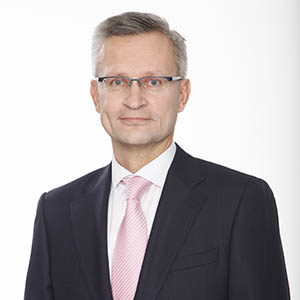Western and Asian efforts to boost relations with the five Central Asia countries is good news for companies and banks wanting to penetrate these big, yet largely unexploited, markets.

Click For Other Sections
Not long ago, even senior apparatchiks in Brussels would have struggled to identify one ‘stan’ from another. Now, improving relations with the five economically and culturally diverse countries of Central Asia has become an EU foreign policy priority. The main driver is deteriorating relations with Russia following its covert invasions of Ukraine and increasing aggressiveness, amid what many see as its transformation into a rogue state that threatens global security. All this is speeding European Union efforts to improve energy security—read as “reducing dependence on Russia.” Gazprom currently provides some 27% of EU gas, but a much higher proportion to the Baltic and Balkan nations.
On February 26, Brussels unveiled its long-term energy strategy encouraging closer links with gas-rich Turkmenistan and Azerbaijan. Both countries have wary relations with Russia—the former last year called Russia “an unreliable partner.” The EU strategy is part of a wider plan to prioritize completion of the $45 billion southern corridor, bringing Turkmeni and Azeri gas across Turkey to Southern Europe. This followed an agreement signed with Kazakhstan in October 2014 aimed at fostering closer relations at all levels. Since then, high-level EU delegations have been frequent visitors to Almaty and the capital, Astana.
Despite being a founder member of the Eurasian Economic Union (EEU), which started operating this January, Kazakhstan is doubtless mindful of its large Russian minority, which the Kremlin could use to justify future hostile actions. However, with energy and commodity prices close to historic lows and oil exports in Kazakhstan, for example, accounting for some 25% of GDP, there is also a renewed eagerness to step up reforms and diversification and attract Western investment.
The motor for this in Kazakhstan, the largest and most West-oriented economy in the region, is reformist prime minister Karim Massimov. He assumed power after Serik Akhmetov resigned with his whole cabinet on April 2 last year following a slide in GDP growth and a 20% devaluation of the national currency, the tenge, a few months earlier. Massimov, who served as prime minister between 2007 and 2012 and head of staff for then-president Nursultan Nazerbayev, is determined to prioritize growth and reform and has been working closely with international financial institutions (IFIs) to make this a reality.
“He has a good, clear idea of what needs to be done here and is initiating changes that are making a difference,” says Janet Heckman, director for the European Bank for Reconstruction and Development (EBRD) in Almaty, pointing to ongoing banking sector reforms (see box), the reform of the civil service and a new regulatory framework for foreign investment aimed in particular at boosting investment in infrastructure.
Road, rail and municipal utility projects are going ahead amid efforts to make them commercially viable for private players, including the $800 million Almaty Ring Road, which will be the first project in Kazakhstan financed through a public-private partnership, according to Heckman. Prospects for the plan look good: The December launch in London of the 66-kilometer ring road—known as Bakad and to be operated under a 20-year concession—attracted more than100 international companies.
Click For Other Sections

With some $30 billion of reserves in its central bank and another $77 billion in Samruk-Kazyna, its sovereign wealth fund, Kazakhstan is better placed than most to pursue reform at a time of economic and political uncertainty. With a well-educated population of 17 million, a developed though still largely energy-based economy and a broadly consistent record of economic modernization since attaining independence from the Soviet Union 24 years ago, this really is the jewel in the Central Asian crown for potential investors. But it is by no means the only venue of interest.
According to a report released by Commerzbank in February 2015, Central Asia is now a prime spot for FDI with countries keen to attract Western investment now that the commodity and energy boom—which drove growth—is over. This remarkably upbeat document described Turkmenistan as “a country going places,” Uzbekistan, as “the jewel in the crown” (notwithstanding our own observation), Tajikistan as the wellspring of the region, and concluded “you can find good business areas in all.”
One of the authors, Axel Bommersheim, regional head, CIS, argues that many potential investors are simply unaware how much is going on in the region.
“Central Asia is much more than natural resources. There are huge tourist opportunities, hydropower in Tajikistan and a large diversified economy in Uzbekistan, the most densely populated country, with around 30 million residents.”
Bommersheim points to Uzbekistan’s impressive motor manufacturing record—the former Daewoo plant there is now operated by GM, while MAN’s five-year-old joint venture with Auto Uzbekistan is now producing over 6,000 large trucks a year.
Yet these are not easy times for the region. In its latest forecast, when it suggested GDP would grow by 3.5% against last year’s 5.6%, the EBRD warned, “2015 can be expected to be a challenging one with the buildup of external pressures crystallizing into a further slowdown of growth and depreciation of currencies.”
In essence, the region has been hit by the triple whammy of Russia’s self-induced crisis—resulting in sanctions which have hit an economy already under pressure from the drop in oil prices and the failure to reform the economy when prices were high—the fall in oil prices (many expect this year to see an average of just $60 a barrel) and the tailing off of the commodity price boom. This tail-off reflects the decline in Chinese demand as growth in that country slows to around 6%.
The fall in energy prices has hit Kazakhstan the hardest, prompting the EBRD to scale down its expectations for 2015 growth from 5.1% late last year to just 1.5%. It has actually benefited the smaller, oil-importing countries of Tajikistan and Kyrgyzstan. However, they have their own problems, reflecting the drop in Russian remittances. Moscow has put new restrictions on workers from Central Asia, potentially a very serious blow given that remittances account for half of employment and GDP in Tajikistan (the highest ratio in the world) and around 30% in Kyrgyzstan. Indeed, a big drop in remittances between 2013 and 2014 explains why Kyrgyzstan’s growth slowed from 10.5% to 3.6%.
Further currency devaluations, reflecting the oil price drop and the devaluation of the ruble—Russia is still the main market for these countries—seem inevitable. January saw a 19% devaluation of the manat in Turkmenistan and a 30% one in Azerbaijan’s currency. Most are now looking at Kazakhstan, which devalued almost 20% in February 2014, and this was before the great slide of the ruble, which has lost 50% over the past year.
Doing business in the region is not easy, as the countries’ rankings in the annual World Bank survey attest. It is particularly challenging in Uzbekistan, where even the EBRD has suspended operations and where access to convertible currency is very difficult. In Turkmenistan, the state controls most areas of the economy, including the banking sector. The country is likely to remain off-limits to many potential investors.
“These countries face further headwinds going forward. Portfolio investors are still smarting from losses incurred in the (ongoing) reorganization of the banking sector after the 2009 [global financial crisis], while the FDI environment remains challenging. There are huge opportunities here, it is true, but direct investors need to go in with their eyes open,” says Tim Ash, head of emerging markets research at Standard Bank.
So IFIs and development banks continue to lead the way, particularly in helping to improve the operation of small and medium-size businesses, which remain underdeveloped and underfinanced in most of the countries. In early March 2015, the World Bank unveiled a $40 million project aimed at boosting the competitiveness of Kazakh SMEs, which ought to help reduce dependence on the extractive sector.
“SMEs are important sources of economic growth and employment and therefore an essential foundation for shared prosperity,” said Ludmilla Butenko, World Bank manager for Kazakhstan.
Local governments have also been working with IFIs to improve transport connectivity between the countries and the world beyond to enable local producers to better access inputs and boost export capability. The Central Asia Road Links program is the most ambitious part of this initiative.
These countries’ increasingly apparent desire for FDI and diversification could overcome doubts. The 10-year tax breaks announced by Kazakhstan last year for the non-oil sector, the Invest In Kazakhstan campaign launched this year as part of the government’s strategy of mitigating the impact of falling GDP (the so-called Nurly Zhol, or Path to the Future, policy) and its commitment to making Kazakhstan one of the world’s 30 most competitive nations by 2050, all make it the clear winner in terms of FDI appeal.
Tajikistan is also working hard to attract foreign investment by building on the opening of the first-ever hypermarket in Dushanbe. Richard Jones, the EBRD’s head of office there, says the new Auchan will not only bring in high-quality products but also induce investment in agribusiness.
“Its opening will raise the bar locally and thus encourage Tajik farmers to boost exports, particularly to Russia, where there is big demand for (non-EU) fruit and vegetables,” he says.
Olivier Descamps, the EBRD’s managing director for countries of operations, says that after years of being happy to depend on extractive industries, Kazakhstan, Kyrgyzstan and also Mongolia exhibit genuine recognition of the need for diversification. This shift, he says, requires meaningful structural reform. Not only do banking systems, SMEs and the trading sector need to become more efficient, but also the region needs to integrate with the rest of the world by joining the World Trade Organization and expanding links with China.
“For years these countries enjoyed reasonable growth rates, but now some are finally realizing why their potential hasn’t been optimized and are making genuine steps to change this,” Descamps says, arguing that eventual diversification of ownership and a weakening of vested interests is vital.
“Countries like Kazakhstan are making a clear break with the past, and this is being reflected in our rising flow of investments,” he says.
Central Asia At A Glance
Population (M) |
GDP growth 2014 (%) |
GDP growth 2015 *(%) |
Per capita GDP ($) |
Ranking in World Bank 2014 Doing Business Survey |
|
|---|---|---|---|---|---|
|
Kazakhstan |
17 |
4.3 |
1.5 |
11,500 |
77 |
|
Kyrgyzstan |
5.7 |
3.6 |
3.2 |
1,210 |
102 |
|
Tajikistan |
8.2 |
6.7 |
4.4 |
990 |
166 |
|
Turkmenistan |
5.2 |
10.2 |
9.7 |
6880 |
Not ranked |
|
Uzbekistan |
30.2 |
8 |
7.8 |
1,880 |
141 |
|
Sources: EBRD, World Bank. |
|||||




